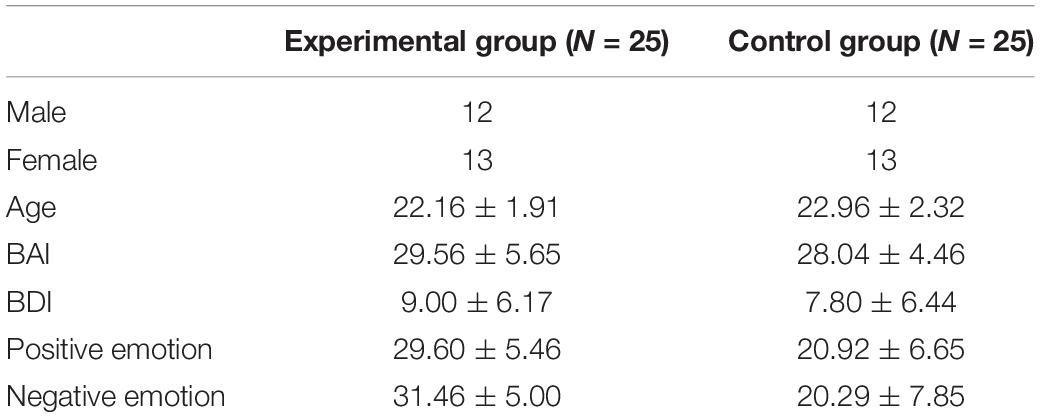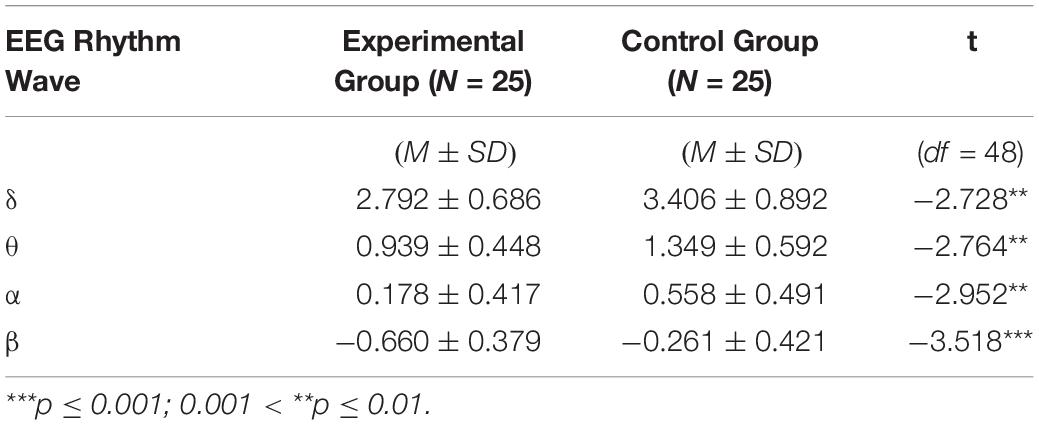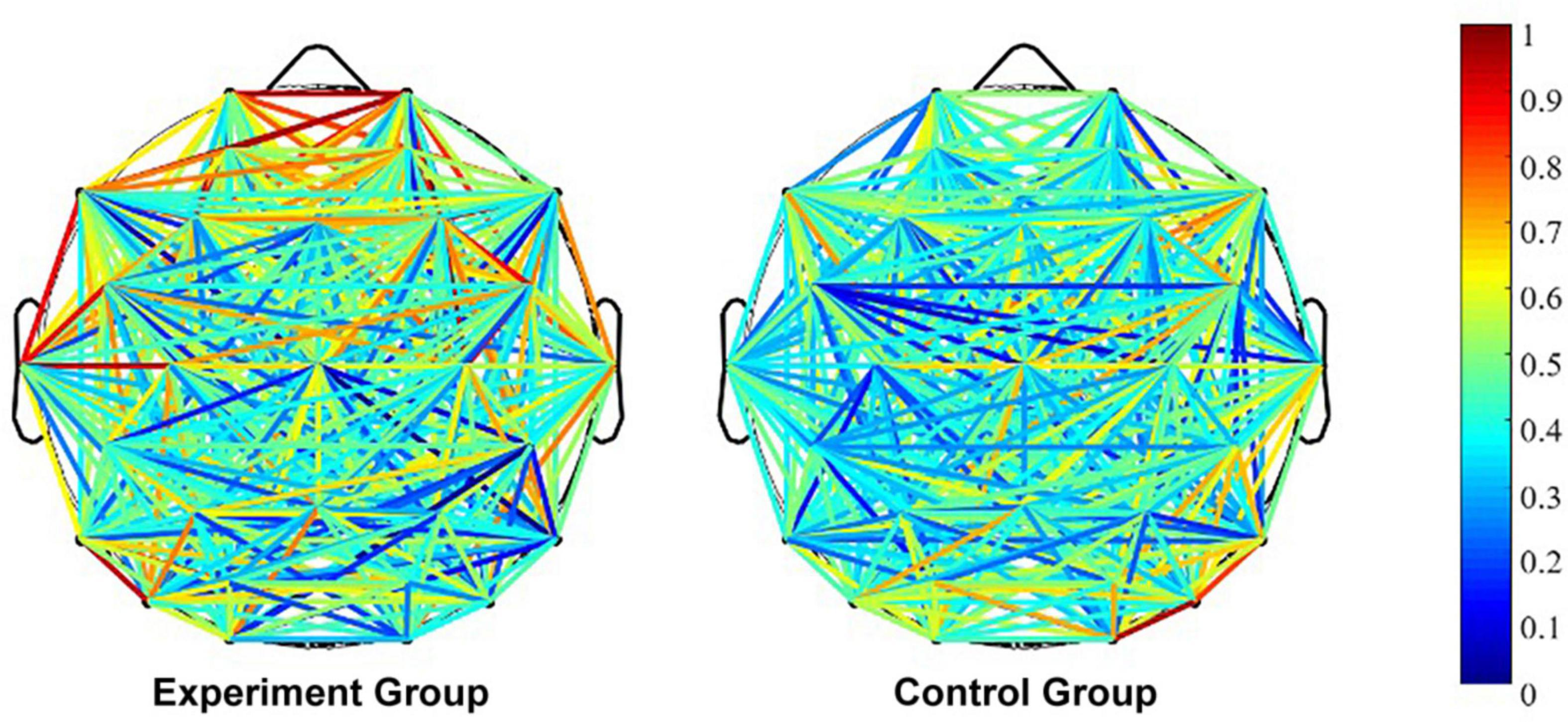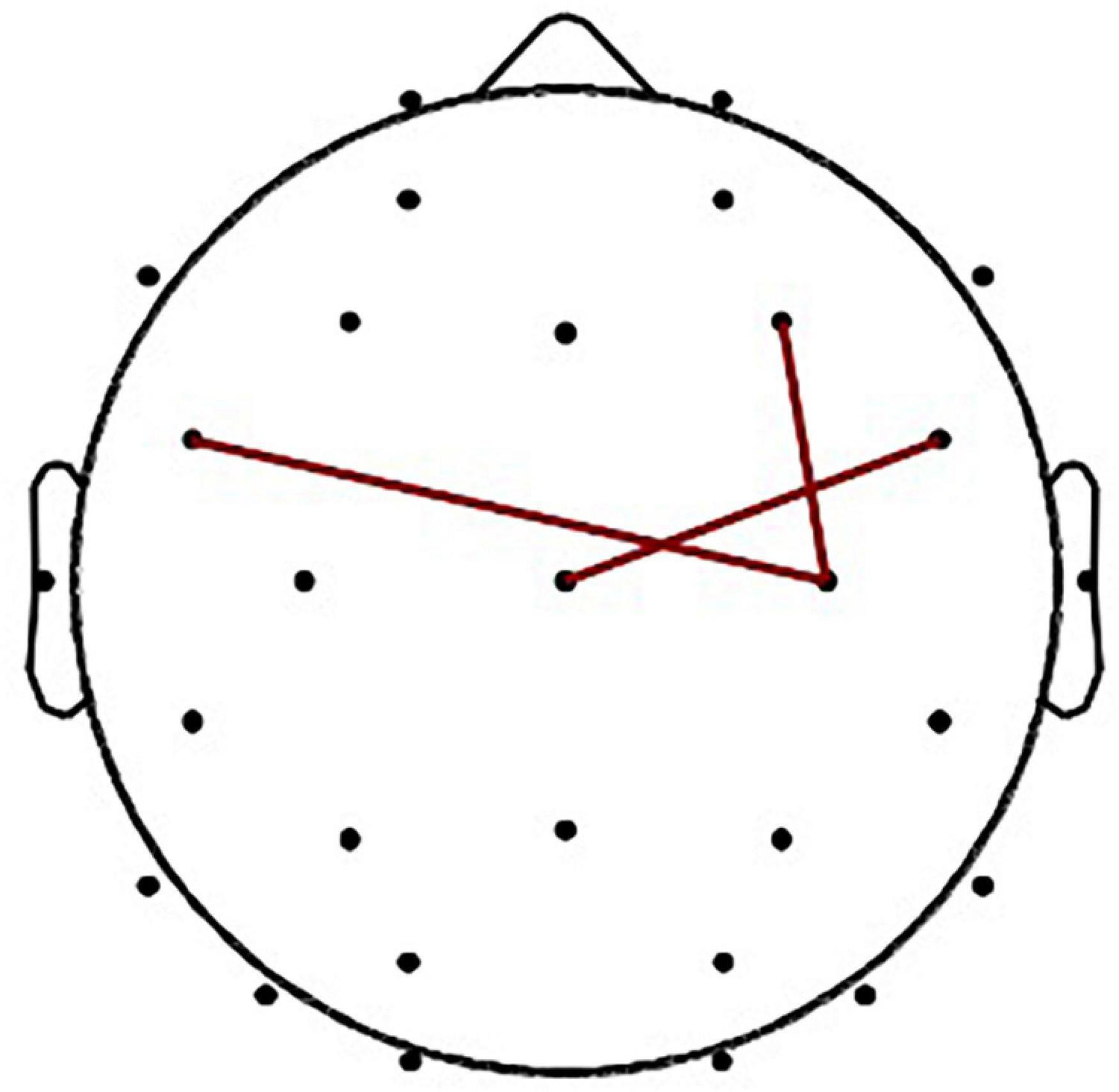- Lab of Cognitive Neuroscience and Communication, School of Journalism and Communication, Beijing Normal University, Beijing, China
The purpose of the present study is to explore how the emotionalized expression of news content in the posttruth era affects the cognitive processing of the audiences. One news that was text-written with two different expression types (emotional expression vs. neutral expression) was adopted as an experiment material in the study, and changes in cortical activity during news reporting reading tasks were examined with electroencephalograms, sampled from nine sites and four channels and analyzed with weighted phase lag index (wPLI) based on brain functional connectivity (FC) method. The results show that emotional discourses caused a stronger cortical brain activity and more robust brain FC (beta oscillations); besides, reading emotionalized expression consumed more attention resources but fewer cognitive resources, which may impede further rational thinking of the audiences.
Introduction
Posttruth, which was selected as the annual word by Oxford Dictionary in 2016, is defined as that emotion and personal belief that is more effective than objective facts in shaping public opinions (Scheufele and Krause, 2019). The narration of the posttruth, tracing to the description for political events, has been used to serve a particular political purpose manipulating truths and facts with the discourse. Previous studies have shown a commonly shared concern of scholars that the fundamental belief of truths and facts has gradually been faded away in the global scene (Laybats and Tredinnick, 2016; Oxford Dictionaries, 2016; Gewin et al., 2017; Rochlin, 2017).
Posttruth alludes to the recognition of the influence of other factors for the truth rather than a denial of truth. The concept of the posttruth has expanded from the political region to more extensive fields, and it is defined in the process of information receiving the reaction of audiences to all forms of truth (Keane and Wight, 2017). It is emphasized that the analysis of the posttruth should originate from more standpoints of the audiences, involving their individualized interpretation of information from different perspectives and their emotions, experiences, and feelings, which would interrupt their own cognition of the truth (Weeks, 2015). It could be seen that emotional expression is an essential feature of media information in the age of posttruth.
Currently, the critical role of emotions has been realized in studies such as cognitive neuroscience and communication (Meyer et al., 2014; Crilley, 2018), where a number of primary researches have explored the impact of emotionalized expression on the audiences under the context of new media. In particular, emotionalized information could affect the cognition of information of the audiences through emotional contagion, besides their judgment on the usefulness of the information with further influence of their follow-up communication behaviors (Ding et al., 2014; Kramer, 2014; Hong et al., 2016). However, self-report or computational online data analysis involved is more frequently used to measure how emotionalized information would affect the cognition and behavior of the individuals. It is often criticized for lacking accuracy or being too macroscopic, and so on the microlevel, the cognitive processing and emotional experience of the individuals could not be reflected in real time.
In cognitive neuroscience experiments, which could be considered as good open science practices, electroencephalography (EEG) measure has been widely applied, which comprehensively reflects through a record of neural activity in the cerebral cortex the cognitive mechanism of the individual in the information processing. The technology is harmless to humans, and the data recording is facilitated with higher time-resolution, leading to a distinct advantage in the implicit monitoring of real-time information processing of an individual. In the previous research, EEG technology has played an essential role in the emotional experience measurement of the individuals, especially when some subtle emotional stimuli could not be easily perceived subjectively, with different emotion statuses that could be reflected by the fluctuations of EEG signals (Kamarajan et al., 2004; Ohme et al., 2009, 2010; Vecchiato et al., 2011; Cartocci et al., 2016; Chen et al., 2017). By far, many studies to have proved a close relationship between the emotional experience of the individuals and their cognitive processes through EEG experiments.
Emotional cognitive processing, additionally, involves the coordination of multiple brain regions; thus, it is necessary to investigate the functional connectivity (FC) between different EEG channels. FC analysis enables the description of cognitive processes within the human brain to support further stage distinctions of brain activities (Torres-Valencia et al., 2017) and is also widely applied in exploring emotion processing mechanism. For instance, the non-linear connectivity of phase-locking value in alpha, beta, and theta oscillations have been used to study the FC of positive and negative emotions induced by different types of stimuli in the brain network (Dasdemir et al., 2017). Moreover, the weighted phase lag index (wPLI) is an acknowledged and robust estimation to detect alterations of functional brain connectivity at the consciousness level (Imperatori et al., 2019).
Hence, the study has been undertaken with the hypothesis that the emotionalized expression of news content in the posttruth era could affect the cognitive activities of the audiences. One news text that was written with two different expression types (emotional expression vs. neutral expression) was adopted as the experiment material in this study, with the EEG measures to record brain signals in the reading process, and the FC method was used to analyze the FC of EEG signals in different oscillations to observe the influence of emotional discourse on individual cognitive activities.
Materials and Methods
Participants
A total of 50 right-handed undergraduates and graduates were recruited and randomly divided into two groups; one experimental group (13 women and 12 men, mean age 22.16 ± 1.91), and one control group (13 women and 12 men, mean age 22.96 ± 2.32). All the participants reported normal or corrected-to-normal vision, had no history of current or past neurological or psychiatric illness, and took no medications known to affect the central nervous system. Their emotional statuses were assessed normal by the Chinese beck anxiety inventory, beck depression inventory, and the positive and negative affect scale (as shown in Table 1). There was no significant difference in the scores of positive and negative emotions [t (48) = 1.240, p = 0.221; t (48) = 0.303, p = 0.763] between the two groups before the experiment. They signed consent before the experiments and were paid for their participation.
Materials
The two groups were asked to read two news texts (with emotional expression vs. neutral expression). Control group read the news article The United States Will Begin Compulsory Labeling of Genetically Modified Foods with 1,369 Chinese characters, concerning the unbiased introduction of the technology of Genetically Modified (GM) foods and food labeling regulation; while the experimental group read the news version which was modified with more emotional expressions and discourses based on the previous one, the original argument was kept unchanged, with 1,343 Chinese characters. All the news materials were printed on A4 papers of size 210 mm × 297 mm.
Procedure
The participants were instructed to have a 3-min resting state before the experiment, and then they were asked to read the text in detail. After the reading, they were asked to answer six questions related to the versions to deepen the image of the content. After finishing the experiment, they took a 3-min tranquillization to recover the emotion status to benchmark. The reading time was about 4 min, and the total experiment time was about 10 min.
Recordings and Analysis
The raw EEG data were real-time recorded from Cognionics Quick-30 32 channels amplifier (CGX, San Diego, CA, United States), which is a dry and non-contact wireless bioelectric sensor system, and sampled at 1,000 Hz, with a 0–100 Hz bandpass. The left mastoid electrodes were used as a reference during recording, and a standard average reference was calculated off-line. Artifacts were corrected using independent component analysis method, and the averaged EEG signals were low-pass filtered at 30 Hz and divided by every 2 s, using EEG Lab 14.1.1 software.
The EEG recording sites were F3, Fz, F4, C3, Cz, C4, P3, Pz, and P4. The average power spectral density (PSD), which were extracted from all the sites on four bands of delta (1–4 Hz), theta (4–8 Hz), alpha (8–13 Hz), and beta (13–30 Hz), were analyzed and the PSD values between the two groups were compared with independent t-test using SPSS 24.0.
Furthermore, the brain FC neuroscience method was also used to show scale-free current source density (CSD) to investigate the brain activity of the audience in the processing of reading news texts. CSD was extracted from the four bands and then the wPLI index was calculated. Whole-brain connectivity was drawn based on the average wPLI, with independent t-test and false discovery rate adjusting, to analyze interregional brain interactions.
Results
PSD Results
As presented in Table 2, the scalp EEG PSD values show significant differences between the experimental group and the control group (reading emotional news text vs. neutral news text).
First, the delta EEG rhythm wave [t (48) = −2.728, p = 0.009, Cohen’s d = −0.614], which related to the complexity of the task (Harmony et al., 1996), shows that in the experimental group the participants encountered a more complex reading task, that is, to say a reading with emotional discourse, leading to more attention resources to be input.
Second, the theta oscillations index [t (48) = −2.764, p = 0.008, Cohen’s d = −0.410], which is related to the arousal and control of working memory (Gevins et al., 1997; Krause et al., 2000; Raghavachari et al., 2001; Deiber et al., 2007), shows that in experimental group the participants had left fewer attention resources for memory.
Third is the alpha EEG power [t (48) = −2.952, p = 0.005, Cohen’s d = −0.381]. The weaker the alpha was (Davidson, 1995; Sarlo et al., 2005), the stronger cortical activity the participants had during the emotional text reading task.
Fourth, it is worthy to note what the beta EEG rhythm oscillation [t (48) = −3.518, p = 0.001, Cohen’s d = −0.399] showed. As the PSD value of beta wave in the experimental group was lower than that of the control group, and the beta wave is related to awareness and cognition (Haenschel et al., 2000; Tibbetts, 2013), it shows that the participants of the emotional text reading group had a weaker cognitive resource input, which could indicate that the news content with emotional expression may hinder deep thinking of the individuals in the process of reading.
FC Results
In Table 3, the differences in the whole-brain connectivity wPLI on all the bands are presented. Notedly, FC on beta band was significant [t (48) = 58.382, p = 0.0008, Cohen’s d = 17.250], across all sites and conditions, but there was no main significance on other bands [alpha, t (48) = 0.521, p = 0.605, Cohen’s d = 0.104; delta, t (48) = 0.650, p = 0.519, Cohen’s d = 0.182; and theta, t (48) = 0.199, p = 0.843, Cohen’s d = 0.091], respectively.
On beta band, whole-brain connectivity is presented in Figure 1, the wPLI interaction metrics is presented in Figure 2, and the significant interaction dynamics (F4–C4, FC5–C4, FC6–Cz) are presented in Figure 3.
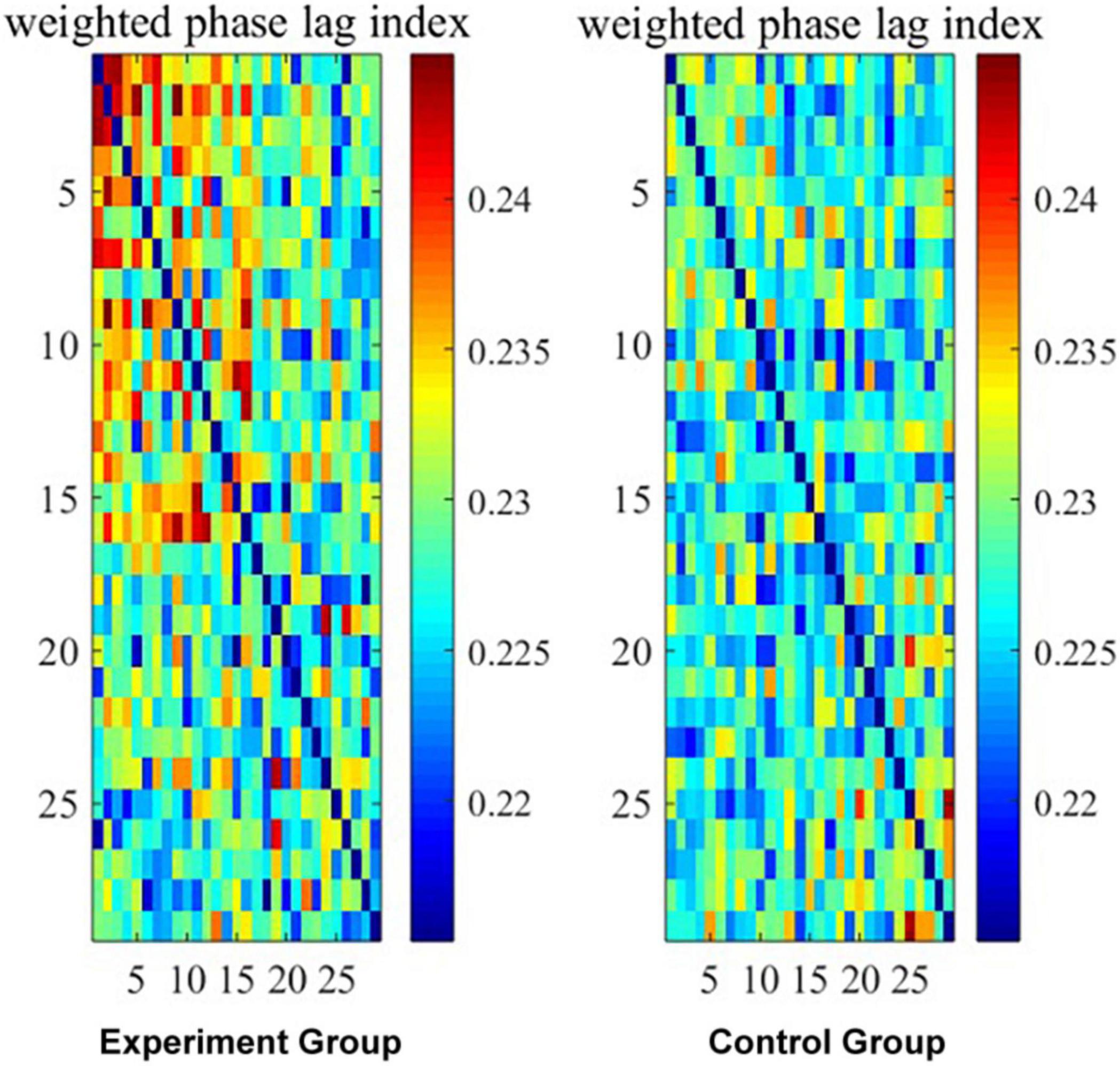
Figure 2. The wPLI interaction metrics on beta band. Note: the wPLI values presented in color blocks.
Moreover, the study compared wPLI performances between the two groups and found out that the FC of the experimental group was significantly stronger than that of the control group in frontal brain regions in F4–C4 comparison [t (48) = 3.818, p = 0.0002, Cohen’s d = 1.103], FC5–C4 comparison [t (48) = 3.701, p = 0.0003, Cohen’s d = 1.079], and FC6–Cz comparison [t (48) = 3.636, p = 0.0003, Cohen’s d = 1.056], as shown in Table 4.

Table 4. The significantly higher wPLI value in the experimental group than that in the control group on beta band (M ± SD).
Conclusion
The present study incorporated the cognitive neuroscience experiment, with the EEG measures to record brain signals in the news-reading process, and FC method and CSD to analyze FC of EEG signals in different oscillations to observe the influence of two different materials (emotional texts vs. neutral texts) on cognitive processing of individuals, indicating that emotional discourses of news content in the posttruth era could affect the cognitive activities of the audiences.
Electroencephalogram results with δ, θ, α, and β bands revealed that news with emotionalized expression caused a stronger cortical brain activity, consuming more attention resources but fewer cognitive resources (beta oscillations), which may further impede rational thinking of the audiences. More importantly, also on the beta band, it was showed that the brain FC of the emotional news reading group was stronger than that of the control group. This robust connectivity appeared in the central frontal region, consistent with the findings of previous studies (Aydin et al., 2018), and mainly in the right brain hemisphere.
The cross brain regional FC of the beta wave was enhanced, which is related to early emotional processing rather than sustained status (Knyazev et al., 2016), and so individuals may locate more attention resources into emotion-related task processing, and less cognitive resources for content-related tasks, which would lead to the weakening of deep processing, showing the PSD in every band to be significantly reduced, especially the theta band, related to working memory, and the delta band related to complex cognitive tasks (Harmony et al., 1996; Gevins et al., 1997; Krause et al., 2000; Deiber et al., 2007).
On top of that, the synchronous activity on beta band represents an implicit mechanism of perceptual emotion regulation, which may be related to the stress for negative emotion (Wyczesany et al., 2018a, b). The emotional discourses in the experiment, particularly negative emotions in the news text, have functioned as a stressor and elicited the brain regions in the right hemisphere to regulate these emotional threats automatically. In this condition, a massive amount of cognitive resources have been consumed in the emotion regulation process rather than in deep thinking and rational processing of news content, also in accordance with the typical performance of the individuals of the posttruth era (Higgins, 2016; Gewin et al., 2017; Rochlin, 2017).
Discussion
Belief echoes in the public sphere (Thorson, 2016) states that in the long term, the attitude of the audiences would maintain even if opposite pieces of truth were provided. In the posttruth era, emotions and bias integrate with worldviews and have created “an alternative epistemology that does not conform to conventional standards of evidentiary support” (Lewandowsky et al., 2017). Emotions affect our cognitive processing of information, thus making a difference to our judgment and cognitive strategies (Forgas, 1995, 2010; Milyavsky et al., 2019). The more exposed we are to negative emotional materials, the more time and energy we squander in distracting tasks to deal with them (Isen, 1987). It is concluded that the emotion triggers a priming effect, and emotional expression serves as the noise of communication. Thus, the era of posttruth discourse prioritizes emotion over facts, be it GM food news or other kinds of information.
In summary, in the posttruth era, the news context with emotionalized expression could easily activate cortical activity and connectivity, and attract the attention of the audiences, explaining the phenomenon that conveying information and reporting with emotionalized expression would be easier in the media channels. Compared with the neutral and objective discourses, emotional content is equipped with subjective standpoints, ready to arouse the interest of the audiences when it is consistent with their presumed values, beliefs, and attitudes. Meanwhile, the study has found that audiences may dedicate much more cognition resources to handling those with emotionalized expression with little attention to the actual content or fact itself. In other words, the audience would prefer superficially to stay in the emotions while the emotionalized expression hinders possible deeper consideration of the truth. With the principle of news objectivity unprecedentedly challenged, news content rendered with emotions and opinions induces the truth to be no longer fact-based or objective, one of the critical problems faced by news production as well as the receivers in the age of posttruth.
Data Availability Statement
The raw data supporting the conclusions of this article will be made available by the authors, without undue reservation.
Ethics Statement
The studies involving human participants were reviewed and approved by Ethics Committee at the School of Journalism and Communication, Beijing Normal University. The patients/participants provided their written informed consent to participate in this study.
Author Contributions
YY, LX, and GY participated in the design of the study. YY performed the conceptualization, wrote, and edited the manuscript. LX performed the data analysis and virtualization and wrote the experiment draft. YY and LX conducted the experiment. GY performed the funding acquisition. All authors read and approved the final manuscript.
Conflict of Interest
The authors declare that the research was conducted in the absence of any commercial or financial relationships that could be construed as a potential conflict of interest.
Publisher’s Note
All claims expressed in this article are solely those of the authors and do not necessarily represent those of their affiliated organizations, or those of the publisher, the editors and the reviewers. Any product that may be evaluated in this article, or claim that may be made by its manufacturer, is not guaranteed or endorsed by the publisher.
Acknowledgments
This manuscript was funded by the National Social Science Fund of China (Grant No. 17CXW039), the Fundamental Research Funds for the Central Universities (2020NTSS10), and the China Postdoctoral Science Foundation (2018T110062). We are very grateful to the help of Feifan Qian, Yao Chen, Ting Han, Xuejiao Chen, and other students in the data collecting and processing.
References
Aydin, S., Demirtas, S., and Yetkin, S. (2018). Cortical correlations in wavelet domain for estimation of emotional dysfunctions. Neural Comput. Applicat. 30, 1085–1094. doi: 10.1007/s00521-016-2731-8
Cartocci, G., Cherubino, P., Rossi, D., Modica, E., Maglione, A. G., Di Flumeri, G., et al. (2016). Gender and age-related effects while watching TV advertisements: an EEG study. Computat. Intellig. Neurosci. 5, 1–10.
Chen, M., Li, L. J., and Liu, Y. (2017). Analysis of Correlation Between EEG Signal and Personal Emotional State. J. Front. Comput. Sci. Technol. 11, 794–801.
Crilley, R. (2018). International relations in the age of ‘post-truth’ politics. Int. Affairs 94, 417–425. doi: 10.1093/ia/iiy038
Dasdemir, Y., Yildirim, E., and Yildirim, S. (2017). Analysis of functional brain connections for positive–negative emotions using phase locking value. Cognit. Neurodynam. 11, 487–500. doi: 10.1007/s11571-017-9447-z
Davidson, R. J. (1995). Cerebral asymmetry, emotion, and affective style. Massachusetts Instit. Technol. 12, 361–387.
Deiber, M. P., Missonnier, P., Bertrand, O., Gold, G., Fazio-Costa, L., Ibanez, V., et al. (2007). Distinction between perceptual and attentional processing in working memory tasks: a study of phase-locked and induced oscillatory brain dynamics. J. Cognit. Neurosci. 19, 158–172. doi: 10.1162/jocn.2007.19.1.158
Ding, X. W., Wu, Z., and Xia, Z. J. (2014). The empirical research of sentiment factors effect on users’ retweet behavior. J. Modern Informat. 34, 147–155.
Forgas, J. P. (1995). Mood and judgment: the affect infusion model (AIM). Psychol. Bull. 117, 39–66. doi: 10.1037/0033-2909.117.1.39
Forgas, J. P. (2010). The role of emotion in social judgments: an introductory review and an affect infusion model (AIM). Eur. J. Soc. Psychol. 24, 1–24. doi: 10.1002/ejsp.2420240102
Gevins, A., Smith, M. E., McEvoy, L., and Yu, D. (1997). High-resolution EEG mapping of cortical activation related to working memory: effects of task difficulty, type of processing, and practice. Cereb. Cortex 7, 374–385. doi: 10.1093/cercor/7.4.374
Gewin, V., Hayhoe, K., Basurto, X., and Brossard, D. (2017). Communication: post-truth predicaments. Nature 541, 425–427. doi: 10.1038/nj7637-425a
Haenschel, C., Baldeweg, T., Croft, R. J., Whittington, M., and Gruzelier, J. (2000). Gamma and beta frequency oscillations in response to novel auditory stimuli: a comparison of human electroencephalogram (EEG) data with in vitro models. Proc. Natl. Acad. Sci. 97, 7645–7650. doi: 10.1073/pnas.120162397
Harmony, T., Fernández, T., Silva, J., Bernal, J., Díaz-Comas, L., Reyes, A., et al. (1996). EEG delta activity: an indicator of attention to internal processing during performance of mental tasks. Int. J. Psychophysiol. 24, 161–171. doi: 10.1016/s0167-8760(96)00053-0
Hong, Y., Huang, N., Burtch, G., and Li, C. (2016). Culture, conformity and emotional suppression in online reviews. J. Associat. Informat. Syst. 17, 16–20.
Imperatori, L. S., Betta, M., Cecchetti, L., Canales-Johnson, A., Ricciardi, E., Siclari, F., et al. (2019). EEG functional connectivity metrics wPLI and wSMI account for distinct types of brain functional interactions. Sci. Rep. 9:8894. doi: 10.1038/s41598-019-45289-7
Isen, A. M. (1987). Positive affect, cognitive processes, and social behavior. Adv. Exp. Soc. Psychol. 20, 203–253. doi: 10.1016/s0065-2601(08)60415-3
Kamarajan, C., Porjesz, B., Jones, K. A., Choi, K., Chorlian, D. B., Padmanabhapillai, A., et al. (2004). The role of brain oscillations as functional correlates of cognitive systems: a study of frontal inhibitory control in alcoholism. Int. J. Psychophysiol. 51, 155–180. doi: 10.1016/j.ijpsycho.2003.09.004
Keane, J., and Wight, C. (2017). For and against truth. Post Truth Initiative, in the University of Sydney. Sydney: University of Sydney.
Knyazev, G. G., Savostyanov, A. N., Bocharov, A. V., Dorosheva, E. A., Tamozhnikov, S. S., and Saprigyn, A. E. (2016). Oscillatory correlates of moral decision-making: effect of personality. Soc. Neurosci. 11, 233–248. doi: 10.1080/17470919.2015.1072110
Kramer, L. (2014). Learning emotional understanding and emotion regulation through sibling interaction. Early Educat. Dev. 25, 160–184. doi: 10.1080/10409289.2014.838824
Krause, J. B., Taylor, J. G., Schmidt, D., Hautzel, H., Mottaghy, F. M., and Müller-Gärtner, H. W. (2000). Imaging and neural modelling in episodic and working memory processes. Neural Networks 13, 847–859. doi: 10.1016/s0893-6080(00)00068-x
Laybats, C., and Tredinnick, L. (2016). Post truth, information, and emotion. Bus. Informat. Rev. 33, 204–206. doi: 10.1177/0266382116680741
Lewandowsky, S., Ecker, U. K. H., and Cook, J. (2017). Beyond misinformation: understanding and coping with the “post-truth” era. J. Appl. Res. Memory Cognit. 6, 353–369. doi: 10.1016/j.jarmac.2017.07.008
Meyer, T., Quaedflieg, C. W. E. M., Giesbrecht, T., Meijer, E. H., Abiad, S., and Smeets, T. (2014). Frontal EEG asymmetry as predictor of physiological responses to aversive memories. Psychophysiology 51, 853–865. doi: 10.1111/psyp.12230
Milyavsky, M., Webber, D., Fernandez, J. R., Kruglanski, A. W., Goldenberg, A., Suri, G., et al. (2019). To reappraise or not to reappraise? Emotion regulation choice and cognitive energetics. Emotion 19, 964–981. doi: 10.1037/emo0000498
Ohme, R., Reykowska, D., Wiener, D., and Choromanska, A. (2009). Analysis of neurophysiological reactions to advertising stimuli by means of EEG and galvanic skin response measures. J. Neurosci. Psychol. Econom. 2, 21–31. doi: 10.1037/a0015462
Ohme, R., Reykowska, D., Wiener, D., and Choromanska, A. (2010). Application of frontal EEG asymmetry to advertising research. J. Econom. Psychol. 31, 785–793. doi: 10.1016/j.joep.2010.03.008
Raghavachari, S., Kahana, M. J., Rizzuto, D. S., Caplan, J. B., Kirschen, M. P., Bourgeois, B., et al. (2001). Gating of human theta oscillations by a working memory task. J. Neurosci. 21, 3175–3183. doi: 10.1523/jneurosci.21-09-03175.2001
Rochlin, N. (2017). Fake news: belief in post-truth. Library HiTech 35, 386–392. doi: 10.1108/lht-03-2017-0062
Sarlo, M., Buodo, G., Poli, S., and Palomba, D. (2005). Changes in EEG alpha power to different disgust elicitors: the specificity of mutilations. Neurosci. Lett. 382, 291–296. doi: 10.1016/j.neulet.2005.03.037
Scheufele, D. A., and Krause, N. M. (2019). Science audiences, misinformation, and fake news. Proc. Natl. Acad. Sci. 116, 7662–7669. doi: 10.1073/pnas.1805871115
Tibbetts, P. E. (2013). Reviewed work: Principles of Neural Science by Eric R. Kandel, James H. Schwartz, Thomas M. Jessell, Steven A. Siegelbaum, A. J. Hudspeth, & Sarah Mack (The University of Chicago Press). Quart. Rev. Biol. 88, 139–140. doi: 10.1086/670559
Thorson, E. (2016). Belief echoes: experimental evidence for the persistent effects of false information. Polit. Commun. 33, 460–480.
Torres-Valencia, C., Alvarez-Meza, A., and Orozco-Gutierrez, A. (2017). “Emotion assessment based on functional connectivity variability and relevance analysis,” in Natural and Artificial Computation for Biomedicine and Neuroscience, Vol. 10337, eds J. M. F. Vicente, J. R. A. Sanchez, F. D. Lopez, J. T. Moreo, and H. Adeli (Cham: Springer International Publishing Ag), 353–362. doi: 10.1007/978-3-319-59740-9_35
Vecchiato, G., Toppi, J., Astolfi, L., Fallani, F. D. V., Cincotti, F., Mattia, D., et al. (2011). Spectral EEG frontal asymmetries correlate with the experienced pleasantness of TV commercial advertisements. Med. Biol. Engine. Comput. 49, 579–583. doi: 10.1007/s11517-011-0747-x
Weeks, B. E. (2015). Emotions, partisanship, and misperceptions: how anger and anxiety moderate the effect of partisan bias on susceptibility to political misinformation. J. Communicat. 65, 699–719. doi: 10.1111/jcom.12164
Wyczesany, M., Capotosto, P., Zappasodi, F., and Prete, G. (2018a). Hemispheric asymmetries and emotions: evidence from effective connectivity. Neuropsychologia 121, 98–105. doi: 10.1016/j.neuropsychologia.2018.10.007
Keywords: emotion, posttruth, news reporting, EEGs, wPLI, functional connectivity
Citation: Yang Y, Xiu L and Yu G (2021) Emotional Information in News Reporting on Audience Cognitive Processing in the Age of Posttruth: An Electroencephalogram and Functional Connectivity Approach. Front. Psychol. 12:734147. doi: 10.3389/fpsyg.2021.734147
Received: 30 June 2021; Accepted: 19 July 2021;
Published: 12 August 2021.
Edited by:
Vincenzo Auriemma, University of Salerno, ItalyReviewed by:
Ester Miranda, Ordine Degli Psicologi Della Campania, ItalyIvana Ferrara, Ordine Degli Psicologi Della Campania, Italy
Copyright © 2021 Yang, Xiu and Yu. This is an open-access article distributed under the terms of the Creative Commons Attribution License (CC BY). The use, distribution or reproduction in other forums is permitted, provided the original author(s) and the copyright owner(s) are credited and that the original publication in this journal is cited, in accordance with accepted academic practice. No use, distribution or reproduction is permitted which does not comply with these terms.
*Correspondence: Ya Yang, eWFuZ3lhQGJudS5lZHUuY24=; Guoming Yu, eXVndW9taW5nQDEyNi5jb20=
 Ya Yang
Ya Yang Lichao Xiu
Lichao Xiu Guoming Yu
Guoming Yu